How to build a house on a budget without sacrificing quality
Think you can't afford to build your own home? It might just be time to reconsider — our expert guide explains how to build a house on even the tightest of budgets
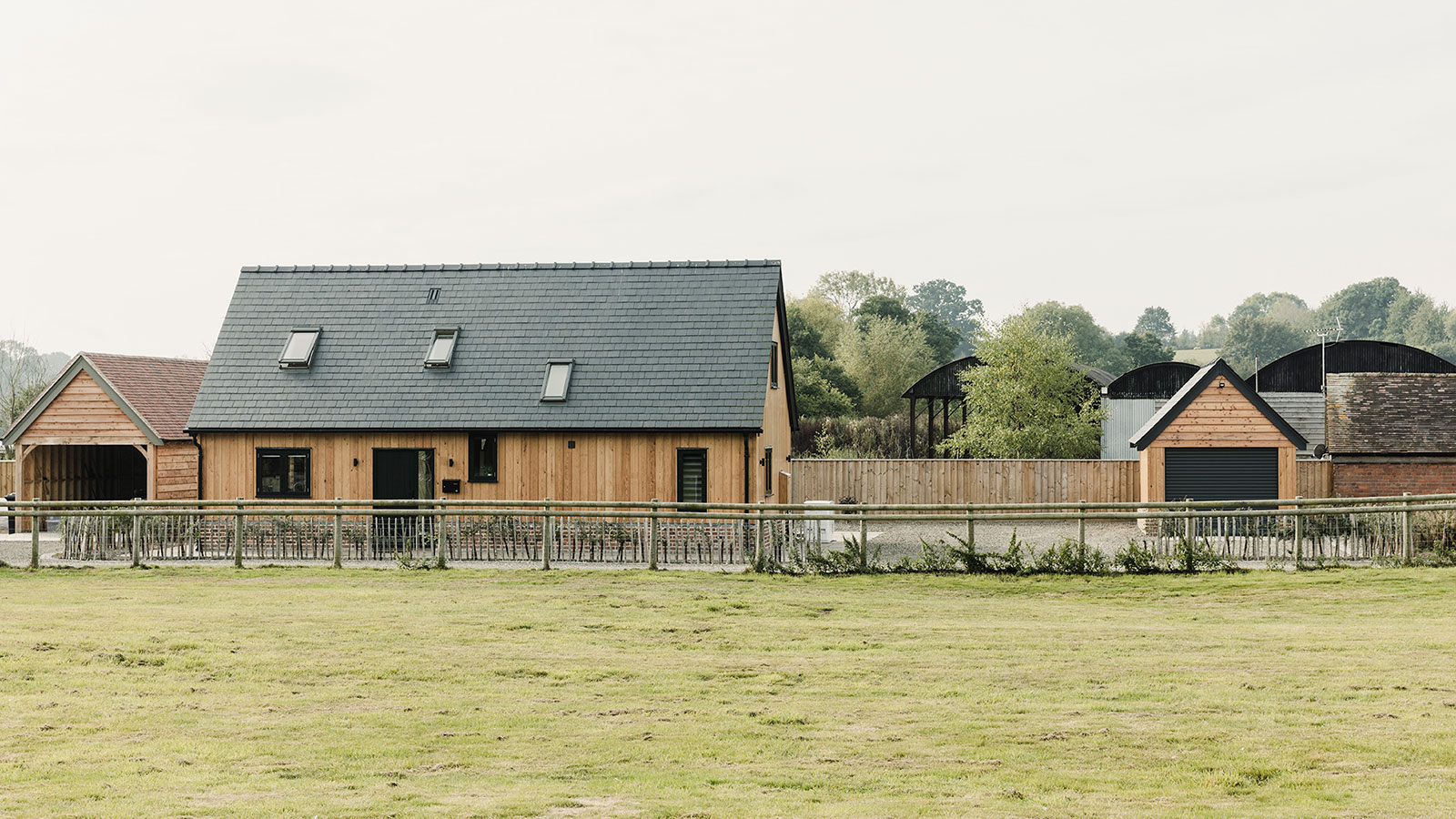
Many people believe that building a house is not an option when on a budget, but this is certainly not always true. Many self builders manage to build beautiful homes for themselves that meet all their needs for much less than the average UK house price. A self build home is a great way to get extra space when compared to buying a pre-existing property.
That said, in order to ensure that your project can be achieved on a tight budget, you’ll need to spend time planning out and carefully considering the build route you'll take and make sensible choices along the way.
Here, we set out the best ways to build a house on a budget and give you examples of those self-builders that have done just this. They are a great place to start in planning a self build project with low costs that doesn’t compromise on quality.
1. Be realistic about the size of your new home
The very best tip for anyone seeking to build a house on a tight budget is to build a relatively small one. In short, the bigger the house, the more bricks, blocks, flooring, roof tiles (and so on) will be required.
Don't let this first tip leave you feeling disappointed though. It is worth bearing in mind that even a small house design, around 150m², would still be larger than a typical four-bedroom developer home, which might be no more than 100m².
Maximise cost efficiency by building a one-and-a-half storey or two-storey house — avoid building a bungalow if you can.
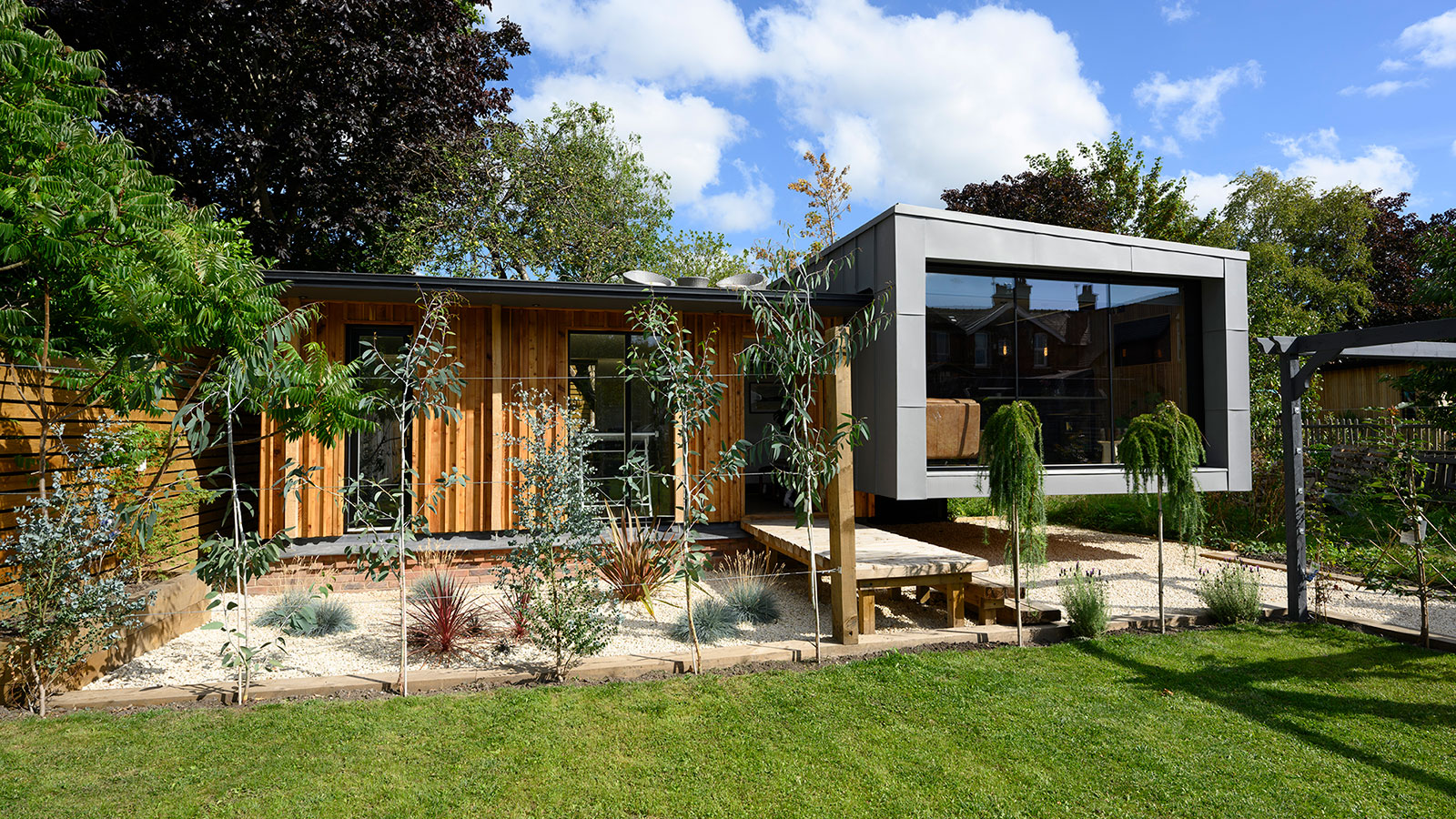
2. Stick to a simple design
Plotfinder is Homebuilding & Renovating's sister website, with thousands of building plots and development opportunities for sale across the UK. It is only £5 a month with a weekly newsletter to give you a round-up of all the best plots and projects on the market.
If you're hunting for your next project, be that with or without planning permission, it's worth taking a look.
When it comes to the design of your house, fuss-free and simple in form really is best. If you build a house with a complicated design, it is likely to increase both your labour and material costs so it is best avoided if you want to keep costs low.
If you are using an architect, they should be able to come up with lots of designs that should minimise costs. Georgian-style houses are great examples of elegant yet unfussy designs that are usually based on a simple box shape so it could help to take a look at some examples for inspiration.
Think about your specification too. Working at saving on the basics doesn’t mean that you have to completely ignore all the new ideas and products that you will come across in your research phase, but before you commit yourselves to spending your limited funds on what might be classed as ‘things you want,’ just make sure you have all the ‘things you need’ covered first.
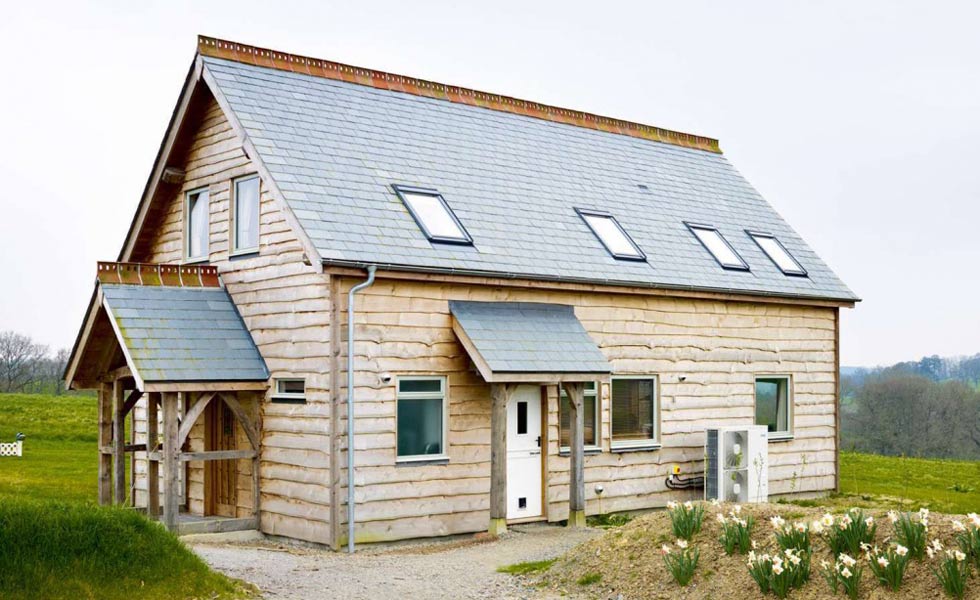
3. Aim to save costs on groundworks
Your groundworks can swallow up a large portion of your build budget so this is one area to get sorted early on.
"The cost of constructing foundations is one of the biggest variables in a self build project, so anyone who wants to keep control of their budget and schedule needs to work out the most appropriate foundation system to use as early as possible," advises David Snell, one of the UK's leading self build and plotfinding experts.
If you can find a flat and serviced plot, this can be a great way to get your cost-cutting off to a flying start. It might seem obvious, but the less groundwork your build requires, the further your budget will go.
Bear in mind you can buy plots at various stages of servicing and planning, and this can also limit your initial outlays.
4. Spend on a structural engineer to save costs later
Another great tip for how to build a house on a budget is to hire a structural engineer early on in your project. When you build a house, you know you’ll be paying for the services of a structural engineer at some point, and as their fee is based on the overall build cost, you might as well hire them at the earliest opportunity.
Your engineer can iron out structural problems while in constant dialogue with your architect, ensuring your design is thoroughly thought out before building work commences. It is vital that your design is fixed before starting any build work — changes on paper are cheaper than changes on site.
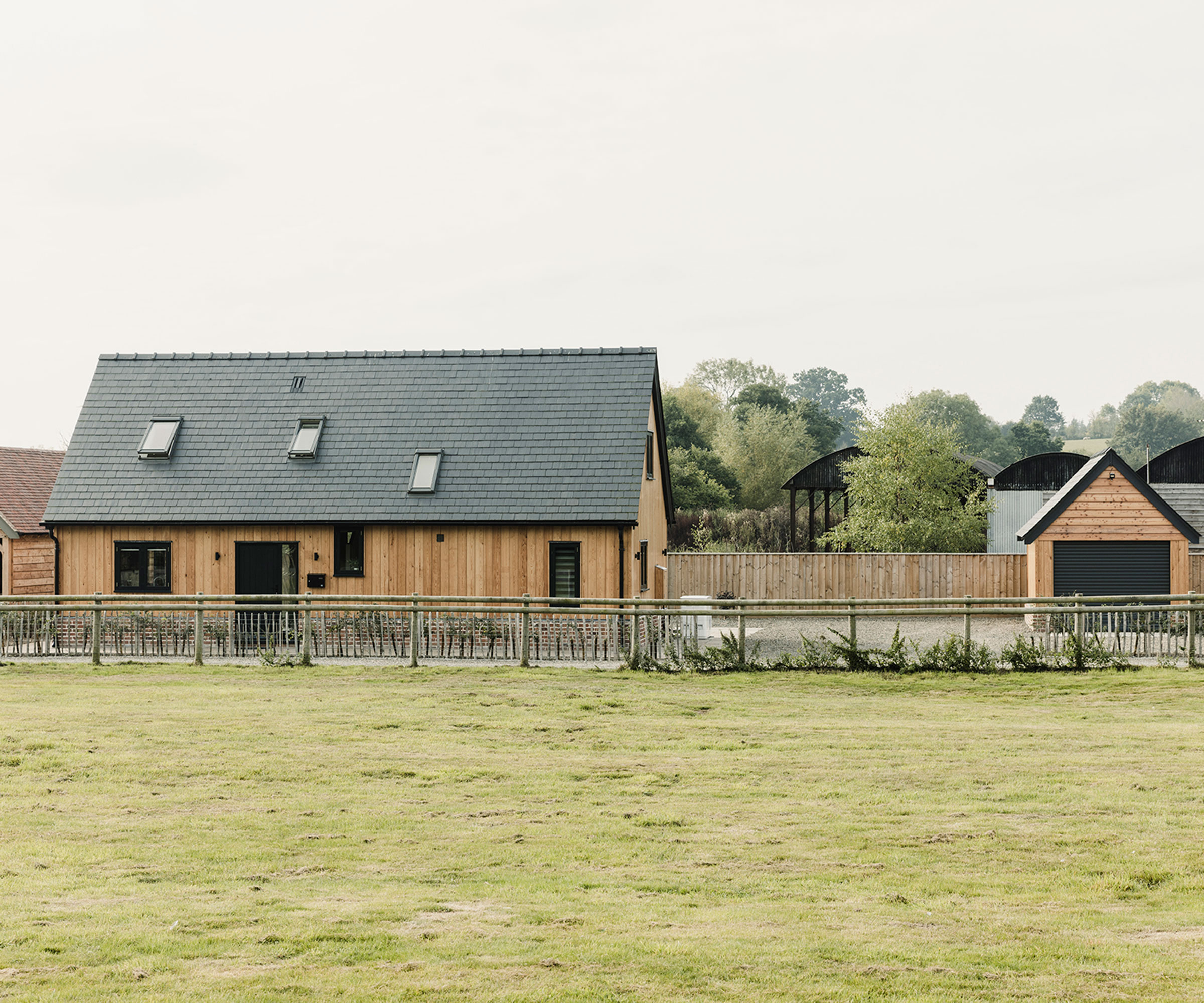
5. Enjoy savings later on by investing in the fabric
Always look to invest your budget in the fabric of the building. The fabric first approach can have a knock-on effect regarding how much you spend on other aspects of your build.
Opting for a highly energy-efficient and airtight build method, such as Structural Insulated Panels or a closed-panel kit, can save you further on materials such as insulation, and potentially on the equipment required for your heating system. In addition, the more heat your home retains, the less you have to pay in heating it.
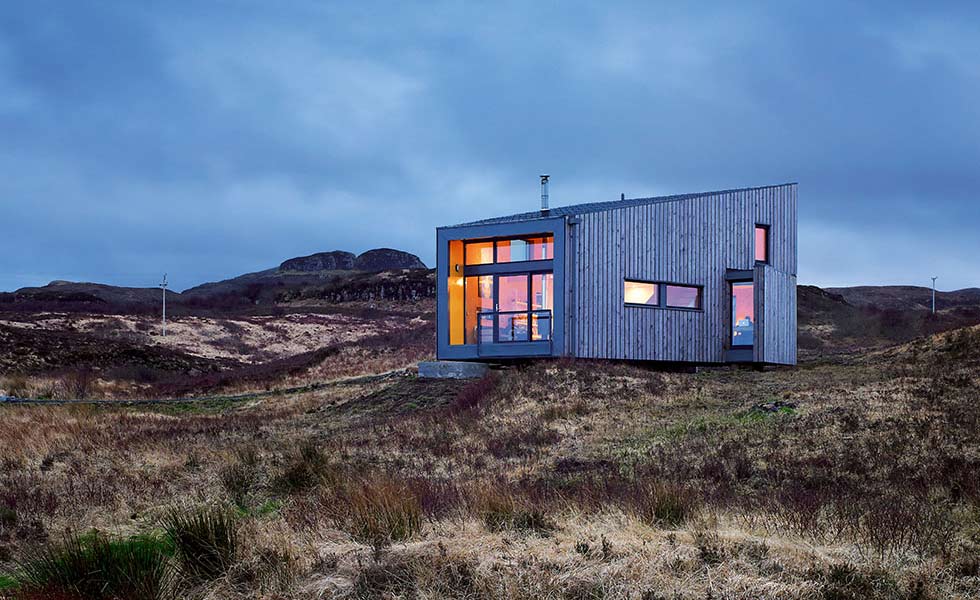
6. Put in as much work yourself as you can
It might sound obvious, but if you are prepared to get stuck into the practical side of your build project, you can expect to make significant savings on your labour costs. Even simple tasks, such as clearing up on site at the end of the day, can result in savings and ensure your contractors can focus on the more skilled aspects of the work.
The general rule is that if you get someone else to do it for you, you will pay a premium. But do only take on tasks that you can complete competently and safely, otherwise it will be a false economy.
Other areas you could tackle yourself include:
- project management
- buying materials
- basic landscaping
- decorating

7. Build your house from blockwork
When you bear in mind that you’ll spend around 15% of your build costs on the external walls, it pays to consider blockwork as you construction method — metre for metre, it is considered to be the cheapest.
That said, alternative walling systems such as timber frame, SIPs and ICF, all offer different qualities that could just reduce your expenditure on other aspects of the build, such as insulation and the time spent on site by contractors.
In reality, the simple methods and materials that housebuilders have been using over many years are also usually the best options if you are on a tight budget. The fact is that if a product or system is commonly and widely used across the industry and across the country, there will be more people providing it and there will therefore naturally be more competition on price.
If you spend as much of your free time as possible in the early stages getting and comparing quotes for all the basic materials and services you are going to need, from as wide a selection of sources as possible, you will usually be surprised at the price variances.
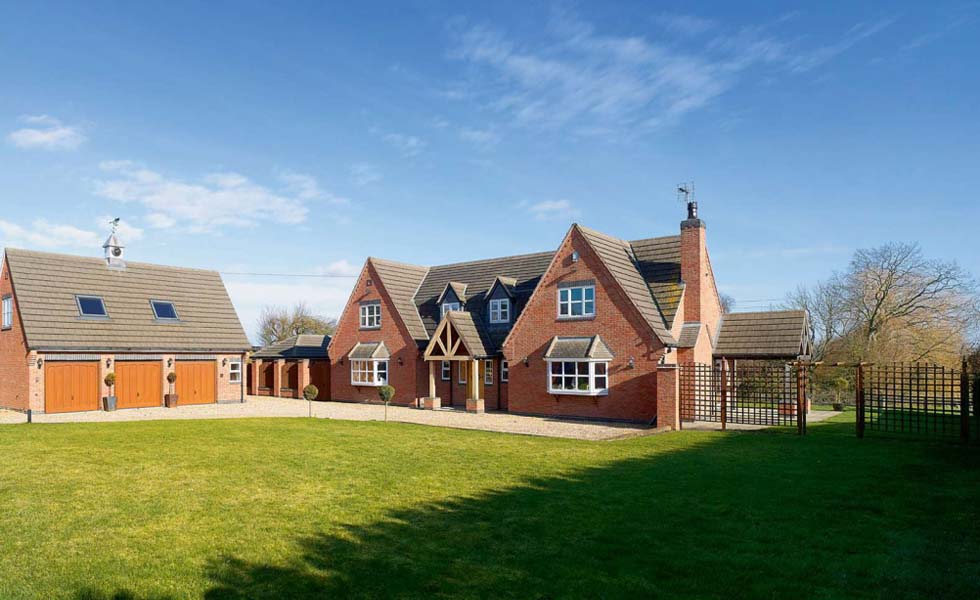
8. Take a mix and match approach to kitchen design
Designing a kitchen and having it fitted can take up a hefty portion of your overall budget and yet there are ways to save without compromising on quality or style.
Ways to save on your kitchen costs, include:
- Go to a smaller local firm for low-cost, high-quality units. Suppliers such as Pineland Furniture will be able to supply units with no chipboard or ply for less than £5,000 — cheaper if you paint them yourself
- Pick out the better ranges at high street names. The mainstream kitchen suppliers offer impressive ranges. Make the most of (almost-constant) sales or be prepared to negotiate
- Mix basic and luxury fittings. You can pick out standard carcasses from trade outfits and mix them with doors from high-end suppliers; you could mix standard units from Wickes with top-quality handles and worktops
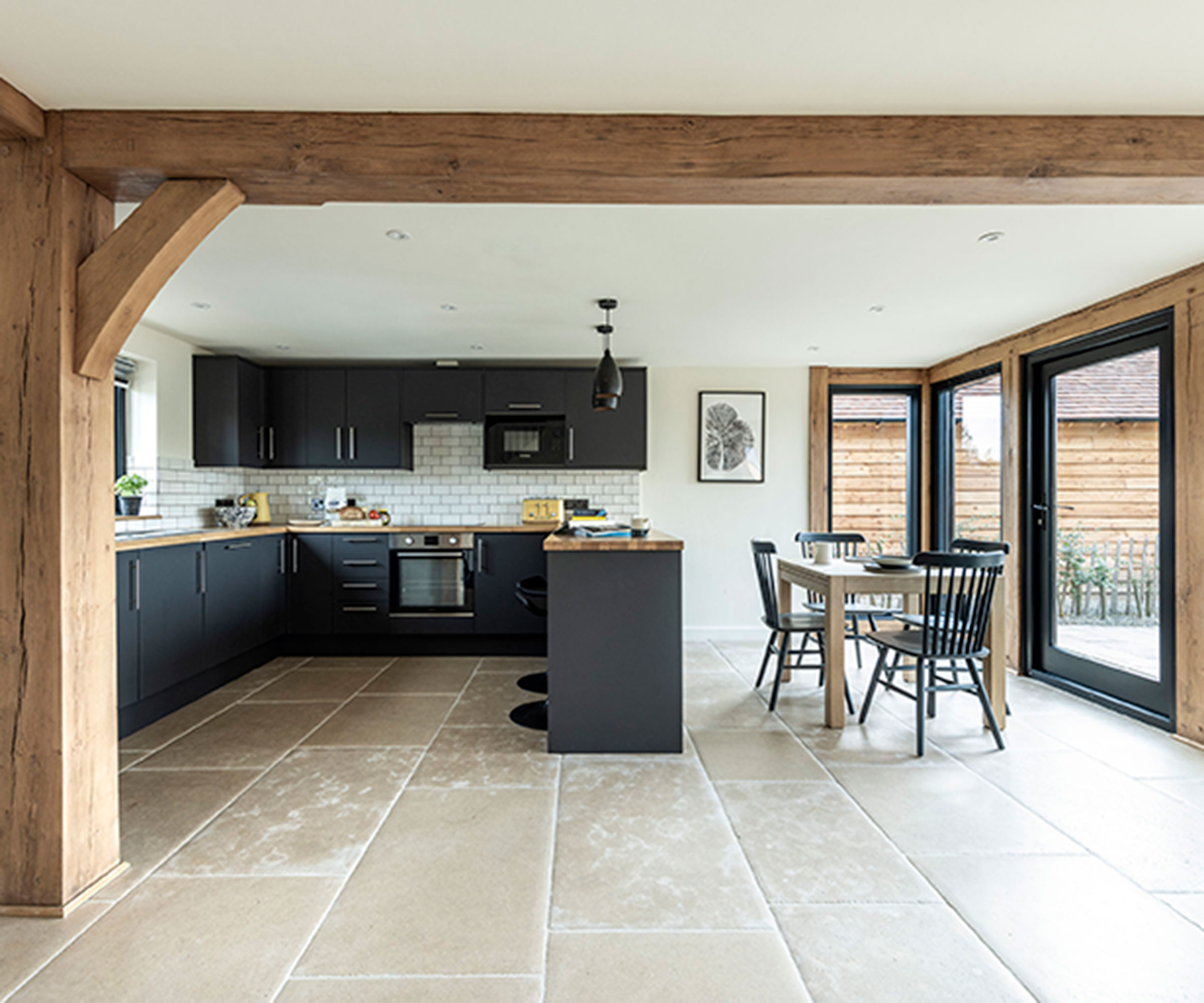
9. Consider an alternative to an architect
The value architects can add value to a project is undeniable. Very often, a skilled architect will be able to suggest ways you can design your home to save on costs and, providing you are honest with them about what you can afford, will design you a house you might not have before thought possible.
That said, go to a recognised architect and you’ll expect to pay 10% of your build costs in design fees at least. So, if your budget is £150,000 (not unheard of) that’s £15,000 on a project that probably doesn’t warrant this type of expenditure.
Those looking to stick to a very tight budget don't have to forgo the design process completely but they should consider taking a different approach. It helps if you can start the process off with a pretty firm idea of the kind of house you’d like to build.
You can then take these ideas to someone with design skills but without the ‘Architect’ title — perhaps a skilled local house designer (speak to local builders to get a few recommendations), who can then draw up workable planning and Building Regulations drawings for you.
This process will potentially save you £1,000s at the start of your project.
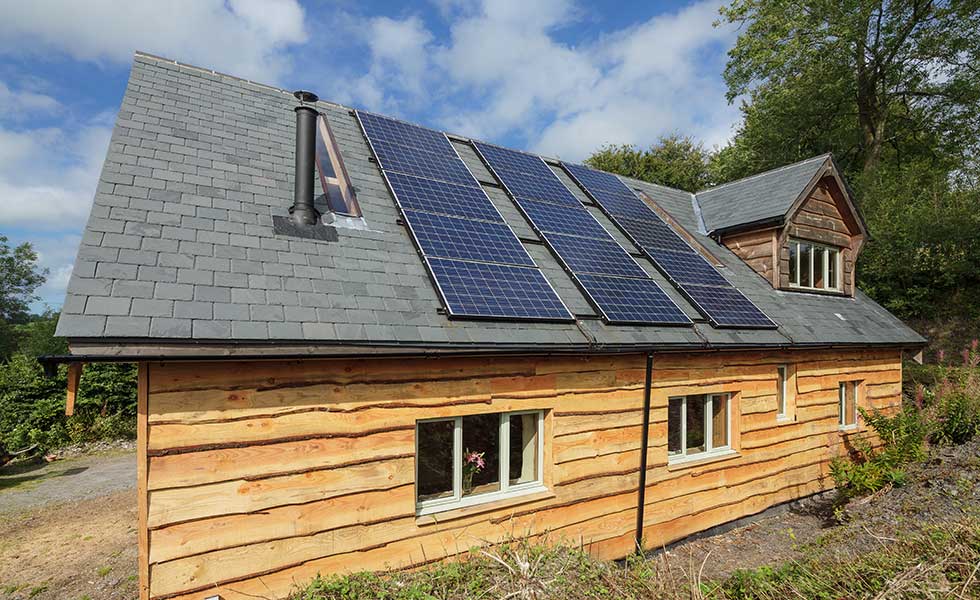
10. Choose your cladding materials with care
When it comes to cladding, budget self builders will find either a render or brick outer skin the most economical of all.
Those building using timber frame looking to spend less on their cladding will find weatherboarding the most efficient and economical way of constructing that outer shell — some people even try their hand at fitting it themselves.
Of course, there are many choices when it comes to render solutions, but you should expect to pay £75/m² facing (it can go up to £125/m² with one of the anti-crack, self-coloured systems).
Those using brick should avoid the very basic wirecut facings but should be able to find attractive bricks at £300/m². You could also inject a bit of instant character by mixing together two or three stock bricks, which doesn’t cost any more than a uniform selection.
Those in a stone belt might be able to save money by specifying reconstituted stone but if planners insist on real local stone, try specifying it as a half-cut facing (similar to a brick slip) to save money on materials. Unfortunately, a lot of the cost of stone is in the laying, which you won’t be able to avoid.
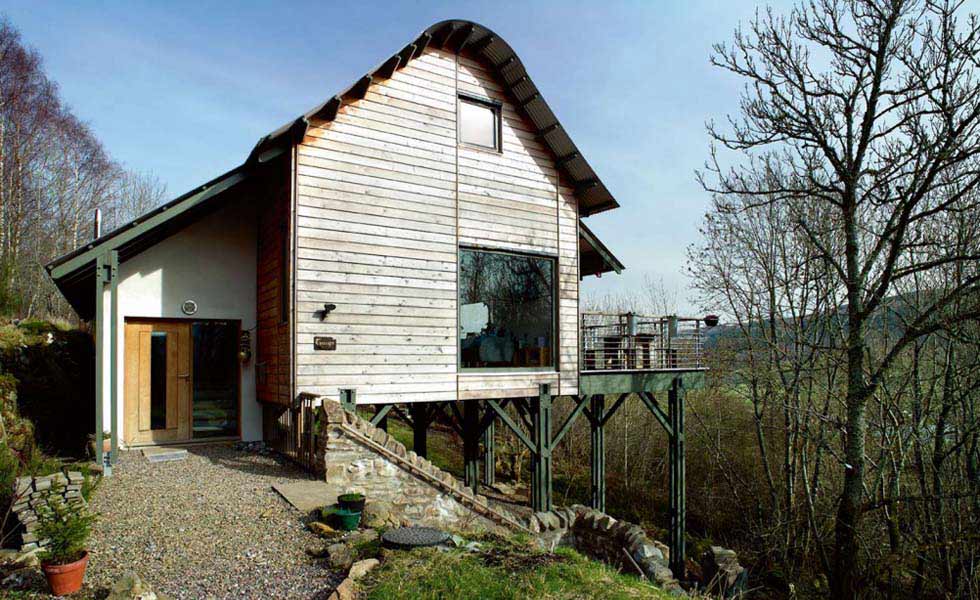
11. Steal some ideas from the developers
When thinking about how to build a house on a budget, it is all about choosing the right design options that have significant cost-saving implications.
For example, very few ordinary developer houses have regular chimney stacks — as many houses so rarely have traditional open fires these days, a traditional chimney is not essential. Replacing a chimney with an exhaust vent terminating at a subtle roof grille will save between £2,000 - 5,000.
If you’re really keen to save every penny, you’ll also be interested to learn that most developers put in conventional ‘fink’ roof trusses rather than attic trusses (which allow the attic space to be used as a room) — it can save between £1,000 - 3,000. But if you want a loft conversion in the future, fink roof trusses are difficult to reverse and a false economy.
Another significant saving that can be enjoyed with less implications down the line is to specify an attached rather than detached garage. Not only is there a saving on basic structural material costs, but it’s much easier for electricians to lay on services to an attached garage rather than one 5m from the rest of the house. You should be able to save £2-5,000 this way.
You can also save on the heating system — owing to the huge variety of options now available. A top-of-the-range heating system, complete with underfloor heating, designer towel rails, controls and a high-quality boiler, could easily cost £5,000 - 7,000 (unfitted). A basic setup, however, with a standard condensing boiler and cheap radiators, will cost in the region of £1,500 - 2,000 (unfitted).
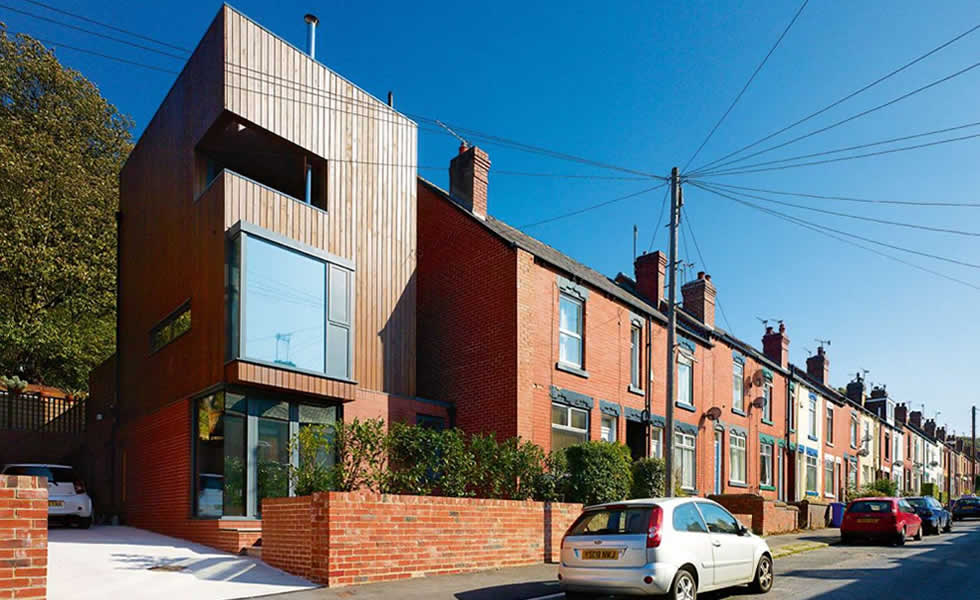
12. Consider buying instead of hiring equipment
Another tip for how to build a house on a budget is to be savvy with the less obvious costs.
An example of how you can make simple savings is to look into buying a set of scaffolding for the duration of your project, then selling it on after. If you hire scaffolding, you will spend a lot more on it over those weeks than it costs to buy it outright, and you won’t get any of that money back! This tip can be applied to other things you might hire — diggers, for example.
13. Brush up on your negotiating skills
Being clever with your materials shopping – and playing suppliers off against each other – can save £1,000s on the bigger purchases.
Use the internet to research prices and don’t be afraid to negotiate. Of course, this all means that it’s much better to buy your own materials — it’s both unlikely that a builder will negotiate as hard on your behalf and also that they will pass on the full benefits of cost reductions.
Don’t forget, too, that you’re in the market for labour as well as materials. It pays to contact a range of local tradesmen in order to do this – “X down the road says he’ll do it for £100 a day…” – but bear in mind that if you end up paying ridiculously under a reasonable rate, the tradesman will simply move onto a better paying job if, and when, it comes up.
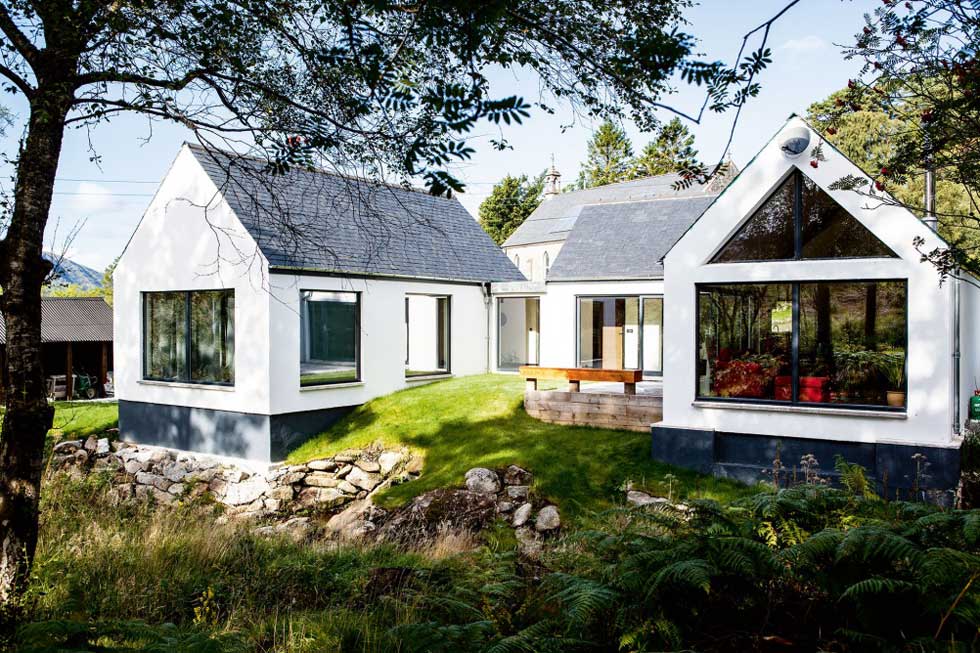
14. Stick to a 'less is more' landscaping scheme
Garden landscape costs should never be left as an afterthought. Certain landscaping jobs have a huge effect for very little outlay — for example turfing. To turf all your garden areas, just level, rake to remove stones then roll — and get the turf ordered. It’s a really cost-effective way to create a great-looking garden.
Pathways and even your driveway can be finished in gravel to give a very pleasing aesthetic. There are many types and colours to choose from and you can mix and match to create some nice effects. Always try to order full loads rather than the tonne bags — this will save you a lot of money.
2” by 2” concrete riven-effect slabs can be bought for just a few pounds each and will quickly give you a decent patio area. If you are feeling brave, you could try laying them yourself too.
Post and rail fencing usually comprises 4” treated posts at 6’ to 8’ centres with 4” by 2” treated timbers simply nailed to them. Using metal spikes instead of concrete to set the posts will make it a faster, easier and cheaper job which you may be able to do yourself.

The former Editor of Homebuilding & Renovating magazine, Jason is an experienced self builder and has recently finished renovating his 1960s home. Jason is now Managing Director of Future PLC's Homes' portfolio, which includes UK-leading titles such as Ideal Homes, Livingetc and Homes & Gardens. He is also the author of The Self Build Dream. You can catch Jason in the seminar theatres and Advice Centre at many of the Homebuilding & Renovating Shows across the UK.

David is one of the UK's leading self build and plotfinding experts, and a serial self builder who has been building homes for 50 years. The author of Building Your Own Home, David spent decades as a speaker and expert at self build exhibitions such as the Homebuilding & Renovating Show. He has recently finished his fourteenth self build project.
Get the Homebuilding & Renovating Newsletter
Bring your dream home to life with expert advice, how to guides and design inspiration. Sign up for our newsletter and get two free tickets to a Homebuilding & Renovating Show near you.

The former Editor of Homebuilding & Renovating magazine, Jason is an experienced self builder and has recently finished renovating his 1960s home. Jason is now Managing Director of Future PLC's Homes' portfolio, which includes UK-leading titles such as Ideal Homes, Livingetc and Homes & Gardens. He is also the author of The Self Build Dream. You can catch Jason in the seminar theatres and Advice Centre at many of the Homebuilding & Renovating Shows across the UK.
